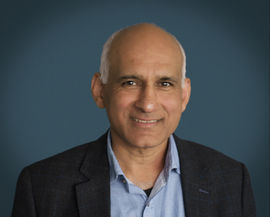Central Auckland, East Auckland, South Auckland > Private Hospitals & Specialists >
Mr Rishi Ram - General Surgeon
Private Service, General Surgery
Hernias
LAPAROSCOPIC HERNIA REPAIR
Please click here to see a YouTube video to help understand the procedure.
Most of my patients receive laparoscopic repair unless contraindicated. I have extensive experience in the laparoscopic approach.
A hernia exists where part of the abdominal wall is weakened, and the contents of the abdomen push through to the outside. This is most commonly seen in the groin area but can occur in other places. Surgical treatment is usually straightforward and involves reducing the hernia contents where they belong and then reinforcing the abdominal wall with a mesh.
A hernia occurs when part of the abdominal contents contained in its lining (sac) pushes through a muscular defect.
For a long time hernia have been repaired by an open technique involving a long incision, approximately 10cms, over the hernia in the groin. This incision extends through the muscle layer, and the sac of the hernia is mobilised, is removed or reduced and then the muscular defect is closed and reinforced with a mesh.
The laparoscopic technique avoids a large skin incision and the muscular cut as well as apposing the defect under some tension. In this way post-operative pain is less and one can return to doing heavy physical activities and work earlier compared with the open technique.
Technique:
The operation is done within the space between the muscle and the inner most lining of the abdominal wall which is created by placing a special small insufflating balloon through a small incision just below the umbilicus. A special camera (laparoscope) is placed in this space. Two small incisions (5 mms) are made below the umbilicus to allow the passage of long instruments into the space created by the balloon. Once the hernia has been reduced, a polyester or polypropylene mesh is placed behind the defect and fixed in place. The mesh is held very firmly by the special self-gripping mesh or screws. An early return to full activity is permissible without fear of inducing hernia recurrence. This is usually achieved within seven days following surgery.
Laparoscopic surgery is certainly more technically demanding than the traditional open approach. Provided attention is applied to detail, damage to the intestine or major blood vessels or nerves is avoided. Although foreign material (mesh) is left in the body, problems with infection around this has been minimal. Bowel obstruction has been described following the earlier method of laparoscopic hernia repair but the risk of this is considerably reduced when using the technique described above.
The laparoscopic procedure is the preferred approach, particularly in bilateral groin as well in recurrent hernia.
POST OPERATIVE INSTRUCTIONS
ACTIVITY: Following a laparoscopic hernia repair there really are no activity restrictions but you have to be sensible in what sort of activities you take part in. Your body is going to dictate as to how much you can or can't do. The average time to full activities is between 1 - 2 weeks after surgery.
DISCOMFORT: There is usually some degree of discomfort in the groin as well as the sugical wounds. There may be some discomfort and increased sensitivity in the testicle/scrotum on the side of the repair. This usually only lasts around 24-48 hours and usually settles very quickly. The testicular discomfort may remain for a few weeks.
BRUISING: Is common but do not be alarmed and it will certainly fade within one to two weeks. Sometimes swelling in the groin may occur on the same side as the hernia. This usually represents fluid collection in the space where the hernia once was and this fluid is absorbed slowly over the next few weeks.
ANALGESIA: Panadol (Paracetamol) and Ibuprofen/Arcoxia are usually needed and are often sufficient.
WOUND CARE: You will have small dressings over the small wounds allowing you to take showers immediately following surgery. These dressings need to be removed in seven (7) days after surgery but leave the steristrips to fall out by themselves.
POST OPERATIVE APPOINTMENT: Your clinic appointment is usually within two to four weeks from your surgery.

